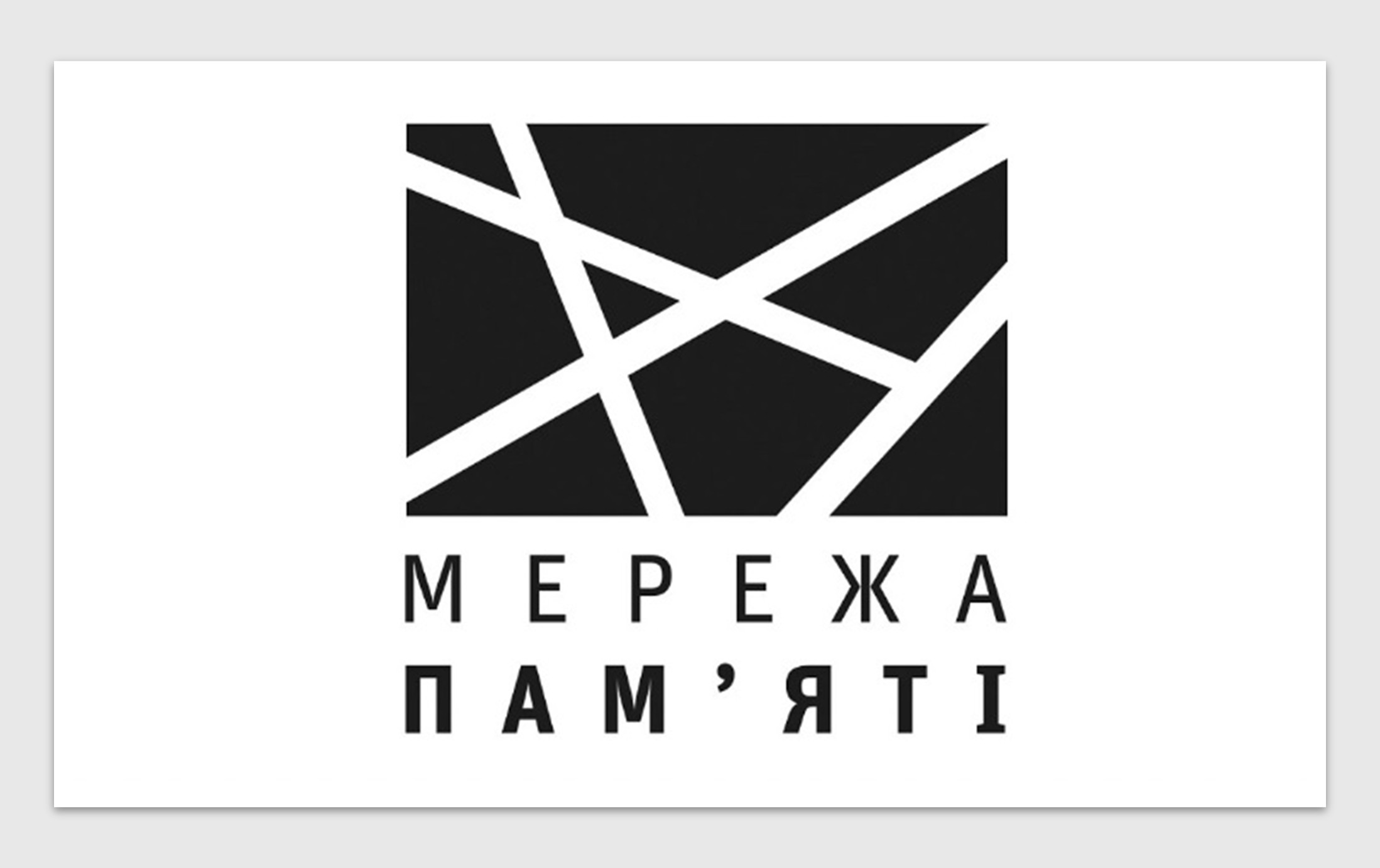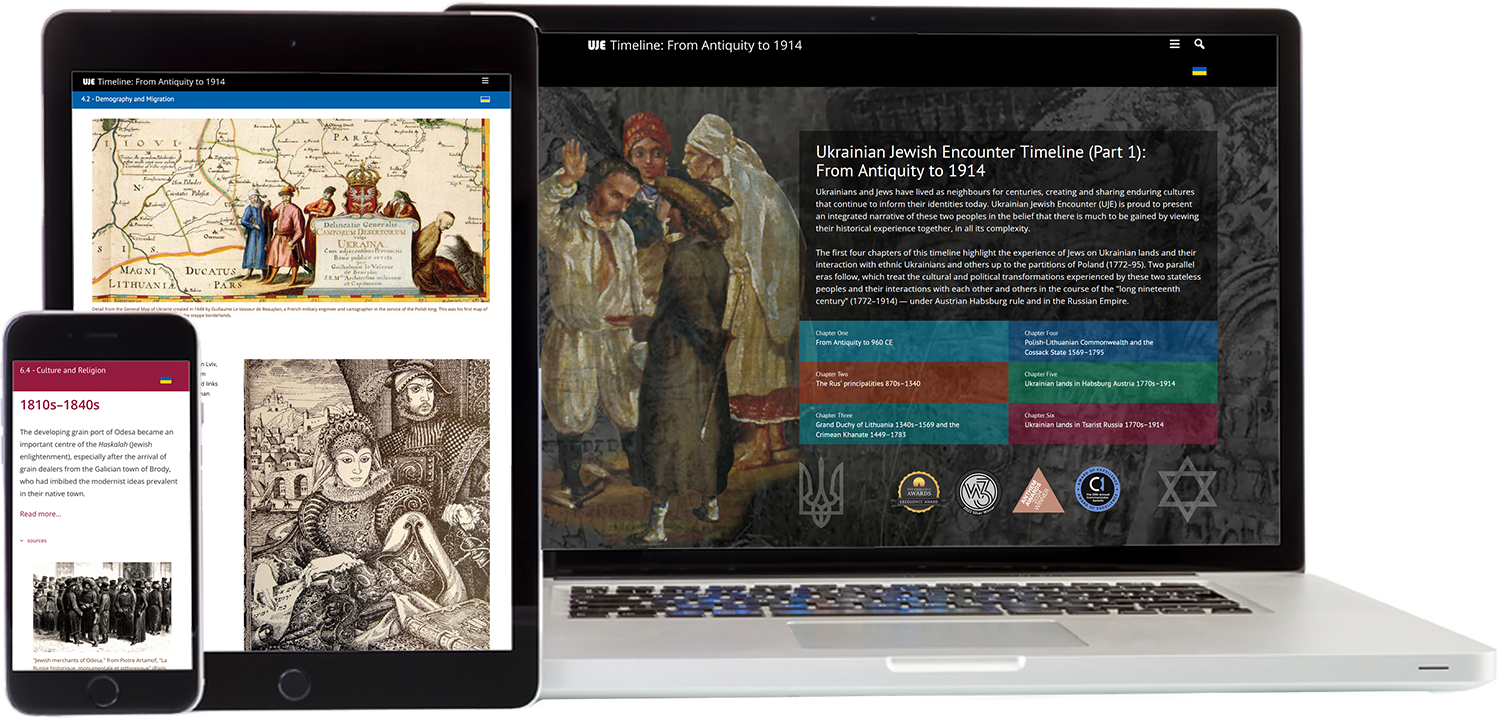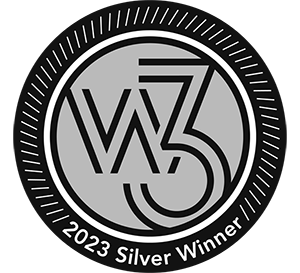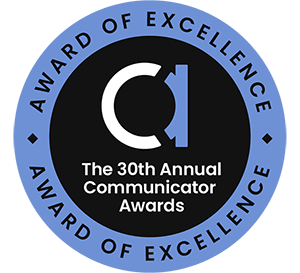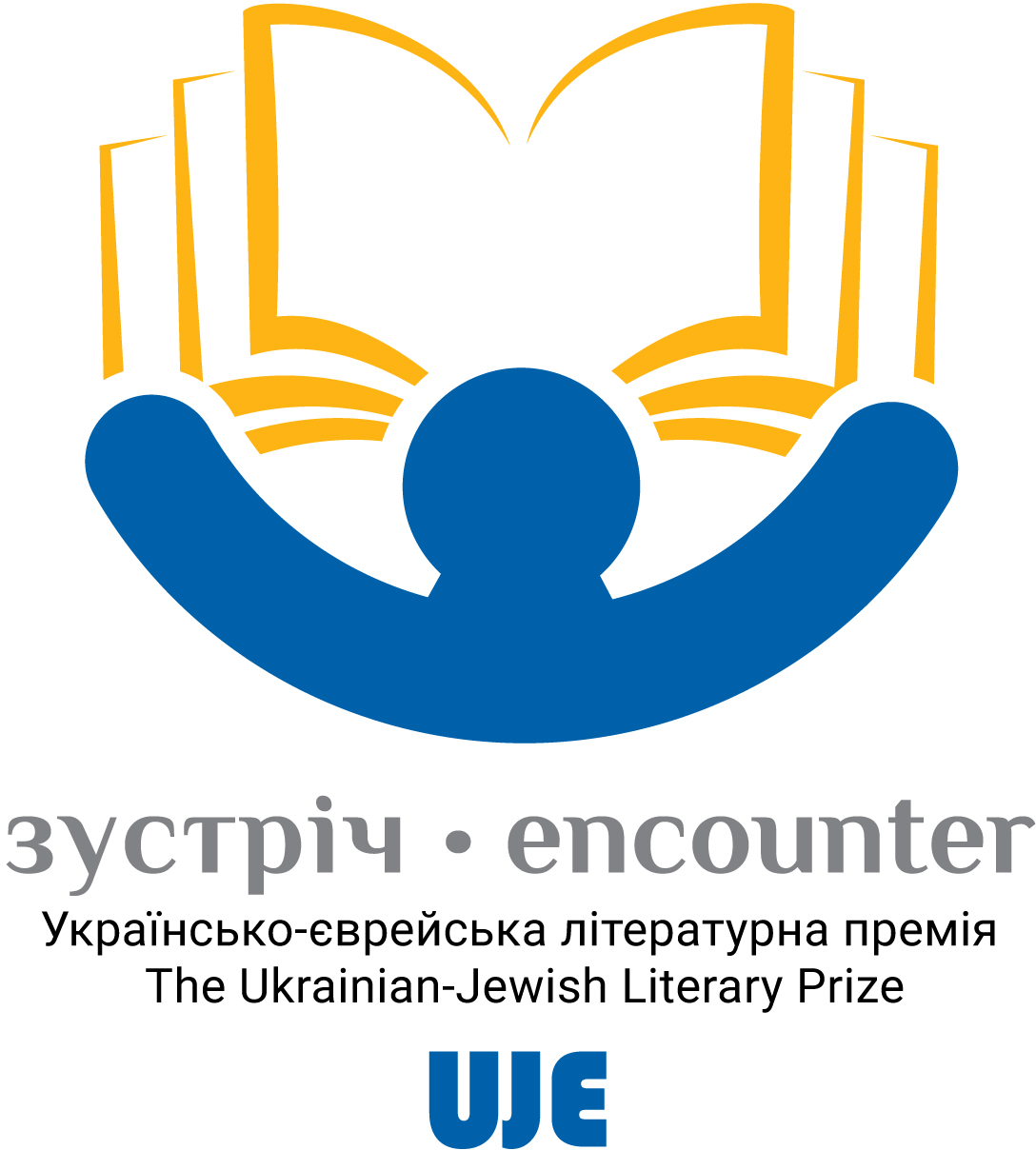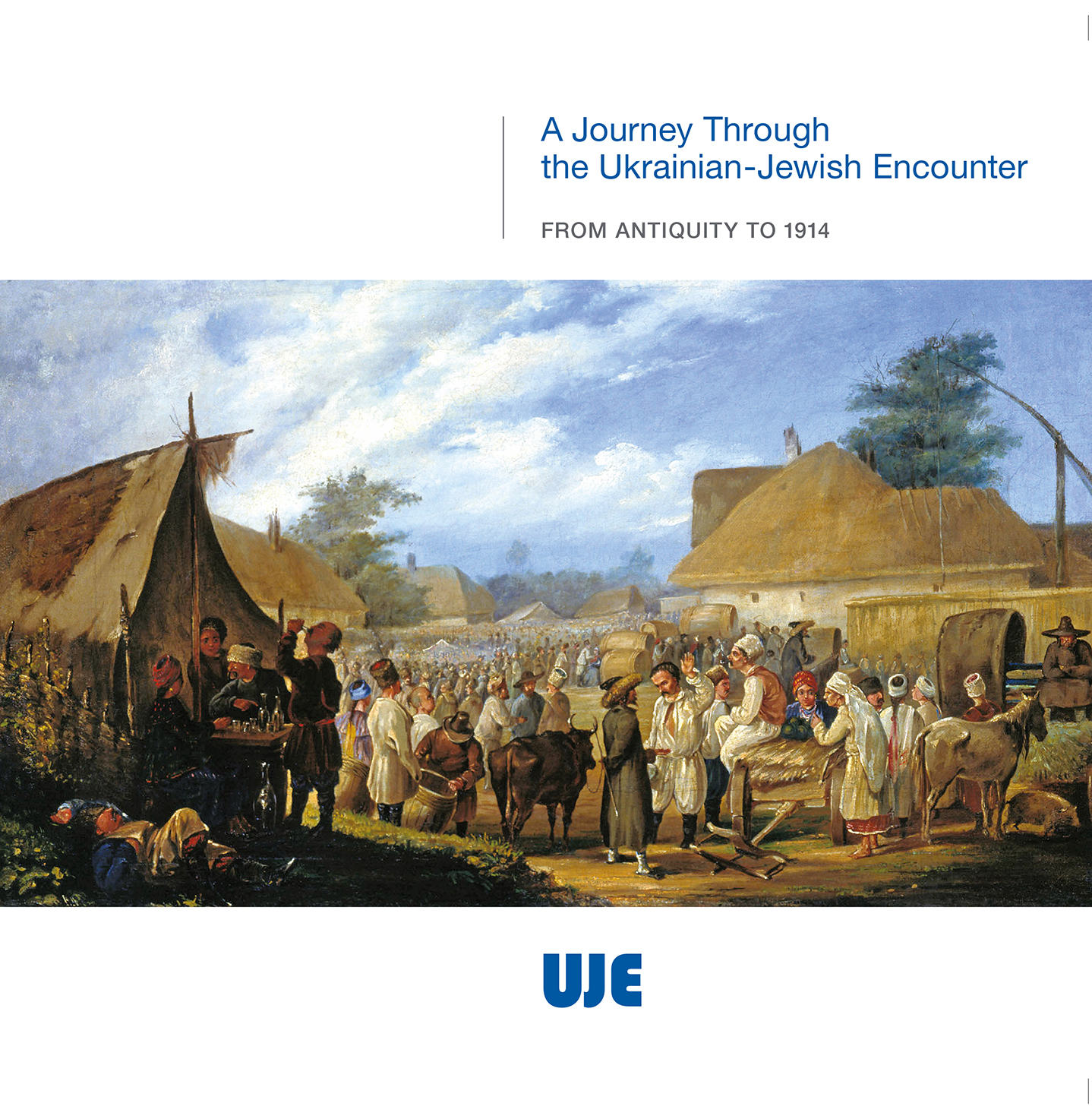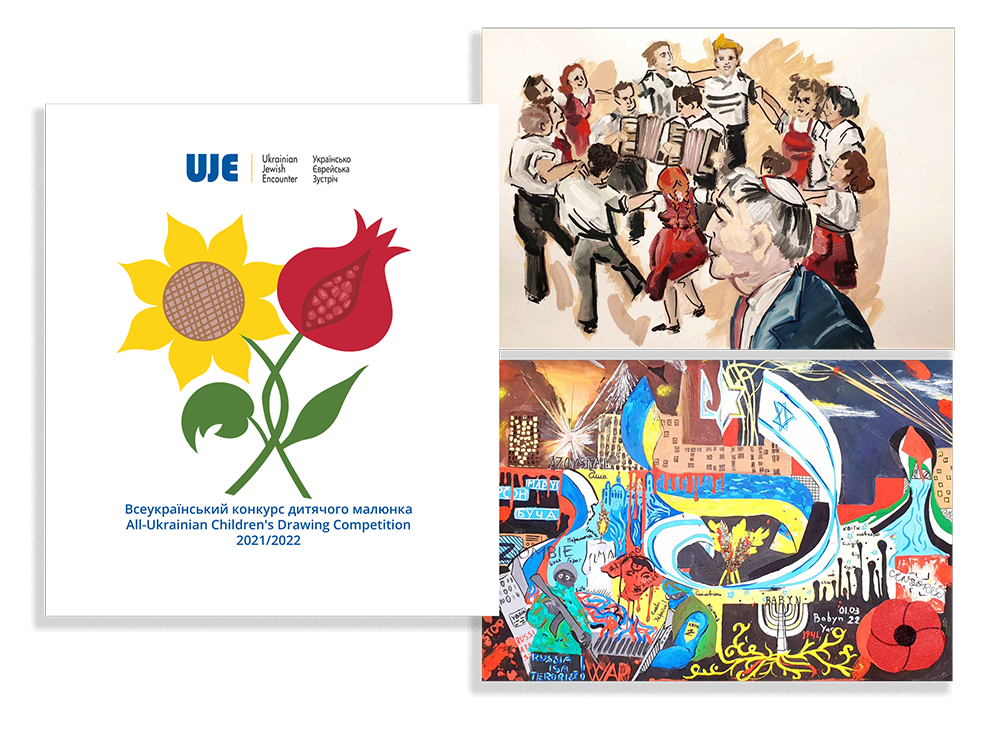Life and Death of the Jewish Communities of Western Volyn (pt. 2)
Part 2 reviews the main discoveries and conclusions that can be drawn from the series of publications on the history of the Holocaust in western Volynian cities and small towns entitled Life and Death of Jewish Communities. The author focuses on the structure of this series, the main stages of the genocide, the participation of the local population and organizations in the Holocaust, and Jews' survival strategies. The article provides a brief overview of the current state of memorialization and public practices to honor the memory of Holocaust victims. Part 1 is available here.
Petro Dolhanov
Structure of the book series
All the volumes in the series have a typical structure (with certain differences, such as local features of the Holocaust's implementation), which aims to reflect the maximum possible number of factors behind the dynamics of the genocide. [1] Each volume contains the following basic chapters: a short historical reference about the founding of a populated area and Jewish settlement; the interwar history of Jewish communities and features of interethnic relations during this period; the establishment of the regime of the "first Soviets" and the impact of Soviet policies on the sociopolitical life of communities and the features of interethnic relations; the start of the German-Soviet war and the first manifestations of Nazi violence during the military occupation; the establishment of a civilian occupation regime and the features of the genocidal policy toward Jews during this period; the second wave of anti-Jewish violence; Jewish survivors after the liquidation of most of the ghettos; the return of Jewish survivors to their former places of residence immediately after the arrival of the Red Army and their further fate; the punishment meted out to perpetrators (German and local ones alike); research and memorialization during the Soviet era and in independent Ukraine.
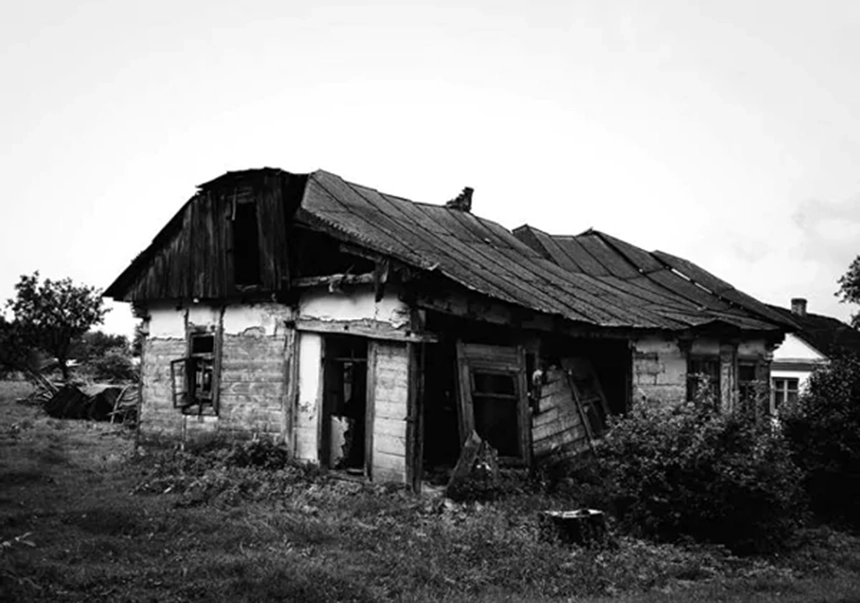
This kind of exposition structure is an attempt to cover the prewar period in the life of Jewish communities in western Volyn, their liquidation during the Second World War, and aspects of justice during the transitional period, such as punishing the perpetrators, establishing the truth, and honoring the memory of victims. Since the lands of western Volyn became part of the USSR, which had no policy of restitution and no compensation was paid to surviving Jews, these aspects were not a structural part of the publications. However, they are occasionally mentioned in the context of the postwar lives of the people who chose to stay and restore the properties that they had lost during the Nazi occupation. But such cases were rare and not always successful.
I then concentrate on various aspects of each subchapter in this series and discuss microdiscoveries and the latest information.
The brief historical notes on populated areas mostly center on the fifteenth to seventeenth centuries, when Jewish communities emerged in the small towns of western Volyn, thanks to the policies introduced by Polish magnates and nobles. This part of the research is a compilation of reference publications that have bolstered our general understanding of the historical context of the interwar period.
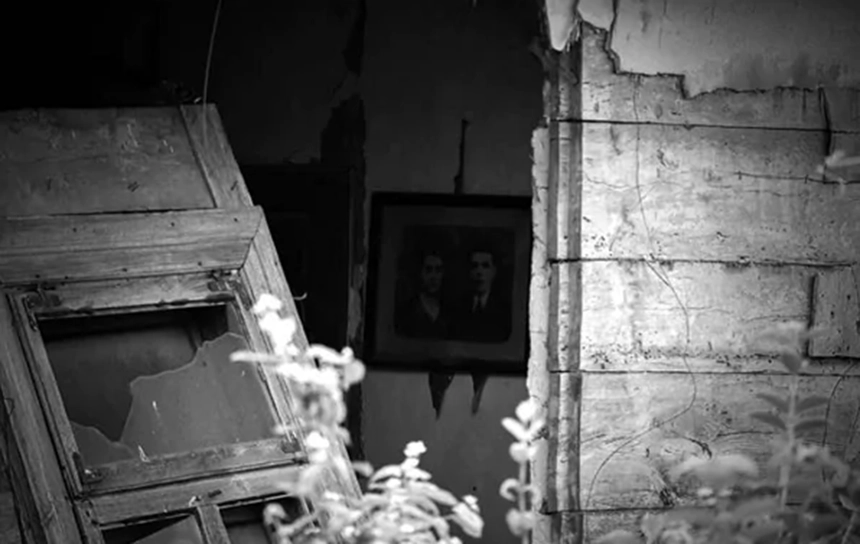
Interethnic relations during the interwar period
This series of publications focuses on the development of Jewish communities and the character of interethnic relations during the interwar period. The research demonstrates that in Holoby and Melnytsia, Kovel, Mizoch, Ostrozhets, and Ratne during this period, there were both conflicts between Jews and their neighbors (some stemming from antisemitism) and close, trusting relations. Jews often recall manifestations of institutional antisemitism in Poland's policies, especially during the second half of the 1930s, more than they do the negative attitude of the local population. For example, eyewitnesses from Ratne testify that Jewish children were compelled to go to school on Saturdays under the threat of expulsion. [2] Jews were also barred from government positions. Boycotts of Jewish businesses organized by young Poles who belonged to various nationalist organizations became more frequent only in the second half of the 1930s. [3]
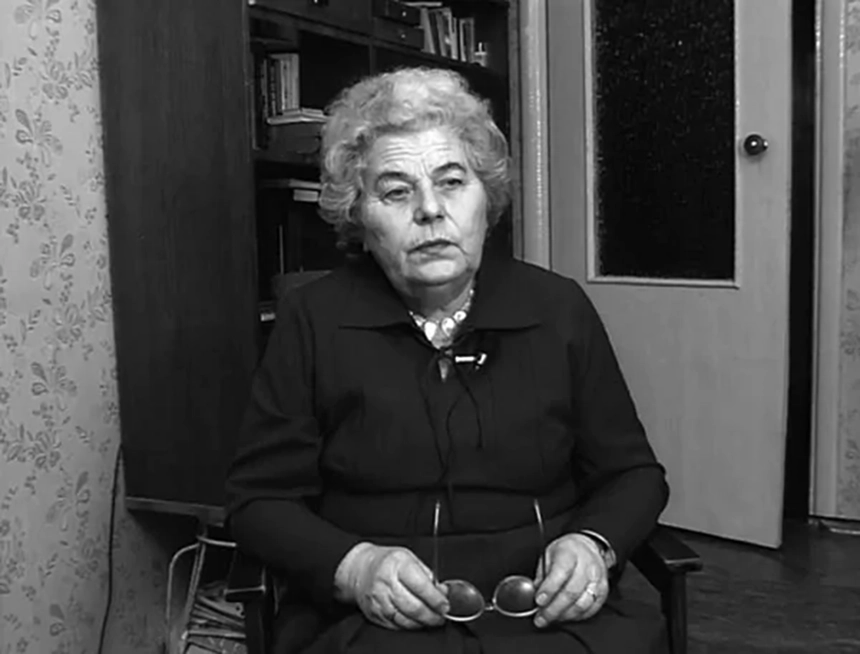
Jews mention little about their Ukrainian neighbors' antisemitism, although there were cases of Ukrainian children beating their Jewish schoolmates. [4] Antisemitism in a Ukrainian milieu is easier to track in the testimonies of Ukrainians who were not free of traditional stereotypes and prejudice. [5] In the conditions of the ethnic borderland, many members of local communities held these prejudices. Antisemitic stereotypes were most frequently tied to socioeconomic biases. Peasants believed that any kind of commerce was a "nonproductive" form of economic activity based more on exploitation and deception than heavy labor. This type of thinking often led to the formation of negative opinions of Jews, many of whom, even if they did own land and raise animals, were often associated with commerce; Jewish agricultural activity was less visible to non-Jewish peasants than commerce. Thus, the belief that Jews engaged in "nonproductive" activities was quite widespread among Ukrainian peasants. [6] There were cases during the Holocaust when such prejudices played a role in peasants' attitudes toward Jews.
In relation to the prewar period, Jewish testimonies contain very few recollections about any forms of ideological antisemitism on the part of Ukrainians. Several sources contain data on the OUN network in Volyn (for example, in Mizoch and Derman). Some members of this organization upheld notions of ideological antisemitism. Still, there was a center of the KPZU (Communist Party of Western Ukraine) in Mizoch, where local Jews and Ukrainian peasants engaged in joint political activities. [7] During the interwar period, the KPZU was one of a handful of organizations that united Ukrainians and Jews in politics.
Jews and Ukrainians also pointed out the existence of good economic relations during this period. Numerous Ukrainian testimonies state that Jews graciously offered goods on credit when buyers lacked funds and that commerce was built on bartering terms advantageous to peasants. Ukrainian, Polish, and Jewish children often attended the same state schools, where they became friends, played together, and gained a good grasp of each other's languages. It became an established practice that Jews communicated in Polish and Ukrainian. While Ukrainians picked up Yiddish words, this was not typically seen in rural locales. In their recollections, peasants indicated more often that they did not understand Yiddish at all, while Jews knew Ukrainian and Polish. The cases of Kysylyn and Ostrozhets attest that the smaller the town, the closer the contacts established in interethnic communication. This communication continued even during the Nazi occupation, when Jews and Gentiles sought to utilize their earlier experience of barter-type commercial operations in Jewish efforts to obtain food from peasants, even during the extreme conditions of the genocide. Of course, since the discovery of such commerce carried the risk of punishment by the Nazi authorities, prices for peasant goods in these conditions increased twofold, if not tenfold. A substantial number of peasants did not disdain the opportunity to cash in on their Jewish neighbors' tragic plight.
In general, the character and intensity of interethnic communication often depended on the specific characteristics of populated areas. Educational institutions were some of the most intensive spaces of interethnic communication. For example, a certain share of Jews preferred a separate Zionist education, in which case they had less contact with the Gentile population. Zionist organizations existed in the majority of the researched small towns and cities, but not all Jewish community members belonged to these movements. Many Jewish children attended ordinary Polish state schools because a Zionist education was expensive, and the poorest Jewish families could ill afford the fees. However, even better-off Jewish families believed that assimilation into the dominant state culture could guarantee a better future.
Regardless of which educational institutions parents chose for their children, interethnic interaction differed in larger cities, small towns, and villages. For example, even though Jewish children attended Polish-language schools here and there, they might recall that it was almost exclusively Jews who attended these schools. Obviously, in larger cities and entirely Jewish-populated small towns, even the presence of a state school was not always a factor of integration because, if Jews comprised an absolute majority in a city district, they could also constitute a monoethnic milieu in Polish classrooms. Therefore, in some districts of larger towns, like Kovel, there were cases where Jews had very little experience interacting with the non-Jewish population. [8]
Regardless of their political convictions, most Jewish communities practiced Judaism (mostly Orthodox and some Hasidic communities). Rejection of a religious worldview was not a widespread phenomenon. Here and there, even Jewish members of the KPZU or other left-wing organizations continued to maintain their religious traditions. The younger generation often chose a more secular worldview, but their family members roundly condemned this choice. Thus, nonreligious individuals, too, became trapped between two worlds, rejecting the values of both. Thus, upholding Orthodox Jewish traditions set Jews apart in sociocultural terms. Jews and Christians alike disapproved of interethnic marriages. [9] Various Christian communities (Catholics, Orthodox, Protestants, and others) also maintained conservative religious traditions.
On the whole, the interwar period does not reveal an elevated level of antisemitism in the small towns of western Volyn, especially in the sphere of Ukrainian-Jewish relations. There were close relations between Jews and Poles as well. Most references to antisemitism pertain either to Polish state policies or young Poles' boycotts or attacks on Jews, which began escalating in the second half of the 1930s.
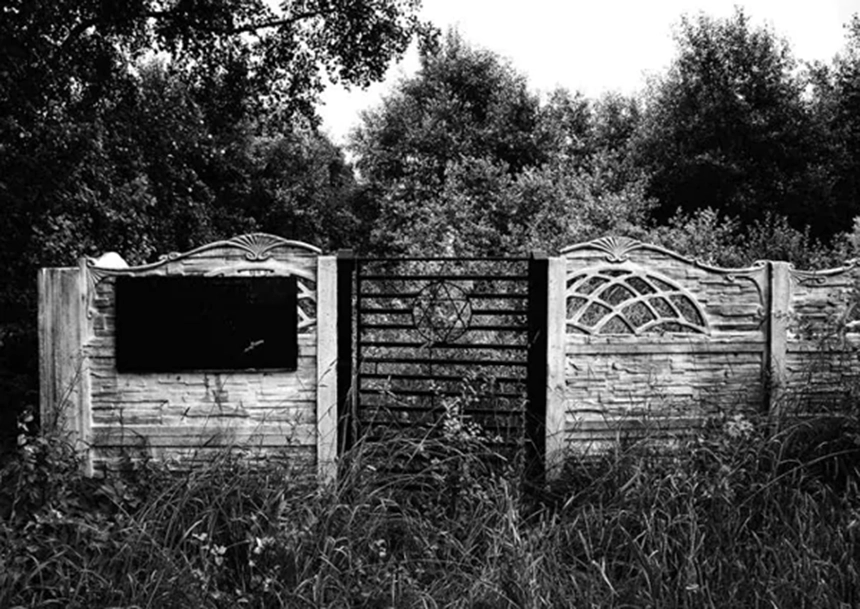
Under the rule of "the first Soviets"
The phrase "the first Soviets" is how the Ukrainian population most often describes the period in which the small towns of western Volyn came under Soviet occupation in 1939–1941. People's recollections differ when it comes to the changes that were taking place in those years and the Soviet government's repressions of Ukrainians, Poles, and Jews. Not everyone refers to the repressions. A substantial number of Ukrainians, as well as Jews, recall the advantages that they gained with the establishment of Soviet power. For example, Ukrainian peasants who were not civically engaged and did not own much land and property benefited from joining collective farms or obtaining government posts that had been closed to "minorities" in interwar Poland. Jews often gained new opportunities thanks to the liquidation of the discriminatory, antisemitic quotas in education and bans on employment in the public sector. To some extent, the Ukrainian and Polish populations mistakenly perceived this situation as the Soviet government's "pro-Jewish policy." However, what actually happened was the formal abolition of antisemitic, discriminatory barriers that had been legally enshrined in interwar Poland.
Jewish residents of all the small towns featured in the series of publications also recall Soviet repressions, such as deportations, arrests, and imprisonment, which affected politically active Zionists. From this point onwards, the authorities repressed activists of this movement, as well as Ukrainian nationalists, and banned all their political activities. More affluent merchants and industrialists (Jewish, Polish, Czech, and Ukrainian) suffered as a result of the nationalization of their property and arrests. Despite these persecutions, most Jews, in their recollections and testimonies, recall events in the history of the Soviet occupation only after the fact — from the perspective of having experienced the Holocaust. This may be one of the key reasons why these eyewitnesses consider the 1939–1941 period under the Soviets generally tolerable, as they adapted to the new conditions and managed to live.
Poles suffered the most from Soviet repressions during this period. Sources also indicate that Soviet repressions also targeted substantial numbers of civically engaged and politically active Ukrainians. For example, data on Ostrozhets points to the arrest of a group of Prosvita Society members. All were shot in June 1941, when the German-Soviet war began. Interestingly, this in no way affected interethnic relations in this small town in July and August 1941. Unlike other populated areas, there were no incidents of anti-Jewish violence here, and the local population did not accuse the Jewish community of complicity — accusations were aimed first and foremost at the NKVD. [10]
The start of the German-Soviet war and the Volyn pogroms: summer 1941
Pogroms took place when the German-Soviet war began in western Volyn in July 1941. Earlier studies of these events discuss both the OUN and the role of local antisemites. It must be said that no pogroms occurred in the majority of populated areas in western Volyn. Even in places where they did occur, they were frequently organized by the Germans, together with members of incoming expeditionary groups of the OUN(B). This question requires further research, as in the case of the pogroms that occurred in Eastern Galicia. [11]
However, research into the Ratne pogrom has produced several interesting tentative findings. A pogrom took place in this small town in early July 1941. Data indicates that at the time, there may have been a spontaneously organized detachment of auxiliary police, whose composition was still not approved by the German military commandant's office. Some of the town's police officers eventually joined the OUN(B) and/or the UPA. However, when the pogrom took place, little was known about their political affiliation. During the pogrom, a Jewish man died because, in resisting his assailants, he killed one of them. In all likelihood, the anti-Jewish violence in Ratne was limited to theft of property, which may have taken place at the initiative and under cover of the police unit, with some of its members involved in the looting. [12] This data points to the fact that such actions clearly violated the directives of the OUN(B) leadership, which was opposed to these destabilizing situations and amoral forms of behavior on the part of their members. If auxiliary police officers belonged to this organization as early as July 1941, they clearly did not abide by its directives.
The spontaneous nature of auxiliary police units in the region attests to some chaos and disorganization, even in those cases where strong OUN(B) centers existed. For example, an auxiliary police unit consisting of local activists was created in Mizoch under the influence of an OUN(B) expeditionary group and the OUN(B) center in the villages of Derman-1 and Derman-2. [13] Jewish testimonies refer to events sometimes corroborated by criminal case files, pointing to the outbreak of anti-Jewish violence in Mizoch in July 1941. This happened when representatives of the German military commandant's office were already in this small town. However, even in this case, the violence was limited mostly to the theft of Jewish property by peasants, i.e., actions that the OUN leadership deemed "amoral." [14] This information helps to formulate a new research question: Did the OUN in the summer of 1941 truly have control over auxiliary police structures that were cropping up in populated areas of western Volyn? Petro Andrushchuk, one of the first commandants of the auxiliary police in Mizoch, who was appointed to this position in early July 1941, stated: "At first, [when] I took up the position of chief of the 'militia, there was no definite instruction for me to head the village police. Some two or three weeks later, the commissar of Mizoch raion summoned me and said that the police groups formed in villages were participating in outrages and independent activities and had to be taken under control." [15]
Against the background of these "outrages and independent activities," some pogroms took place in western Volyn in the first weeks of July. These "outrages" — their dynamics and character — require deeper research, similar to Jared McBride's article about Tuchyn, a small town in western Volyn where the Germans planned and carried out a pogrom together with local police structures, which included members of an OUN(B) expeditionary group. This organized anti-Jewish violence claimed the lives of more than ten Jews. [16] In the majority of cases, spontaneous attacks on Jews by peasants or disorderly auxiliary police units were limited to thefts of property.
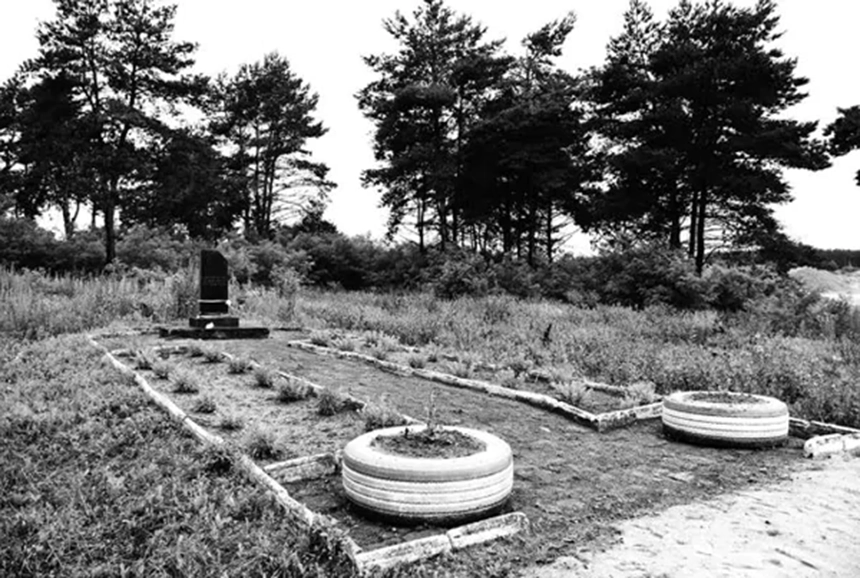
Two waves of violence during the German-Soviet war (1941–1942)
In July 1941, local government structures (auxiliary police units, municipal and raion administrations, and village officer posts) were established in the majority of small towns in western Volyn. This sometimes happened even before the arrival of representatives of the Nazi military commandant's office. These local authorities and police bodies were either elected or sprang up spontaneously due to the self-organizing efforts of the most energetic activists from predominantly Ukrainian communities and/or OUN expeditionary groups. For example, the formation of such governing bodies in the town of Mizoch happened through the cooperation of an OUN(B) expeditionary group [17] with the local OUN(B) center in the village of Derman. The German military commandant's office almost immediately intervened, forcing local initiators to hold elections for the top positions in the police and raion administrations. As a result, Trokhym Huts, the head of the "self-organized" raion administration from the beginning, conceded his position to Ivan Martyniuk. [18] To legitimize these self-government bodies, the Germans thus sought, at least in the summer of 1941, to create or maintain a semblance of "local self-government" for the non-Jewish population.
Of course, the composition of the auxiliary police and local government bodies, fully staffed by local non-Jewish residents, had to be approved by the German military commandant's office. OUN representatives sought to gain control over these processes, but in the chaotic wartime conditions, their role was far from decisive — the examples of Ratne and Mizoch demonstrate this convincingly. No evidence indicates that local administrations were under the OUN's influence in all localities. Here and there, these were local initiatives with no clear-cut political affiliation. In the first weeks of the German occupation, auxiliary police forces were formed chaotically in villages where neither the OUN nor German military commandants' offices wielded proper control.
The OUN's role in this process is frequently inflated in the historiography due to faulty post-factum cause-and-effect connections. Many former auxiliary police officers and local administration members eventually became UPA fighters or joined the Banderite underground. Thus, they were automatically considered Ukrainian nationalists. However, the status of "nationalist" was not static during the Second World War. A substantial number of UPA members did not belong to the OUN(B) and did not espouse nationalistic beliefs. It is worth recalling the practice of forced mobilization into the UPA ranks of people who had experience in handling weapons, especially former auxiliary police officers. This is another important research question that requires further study.
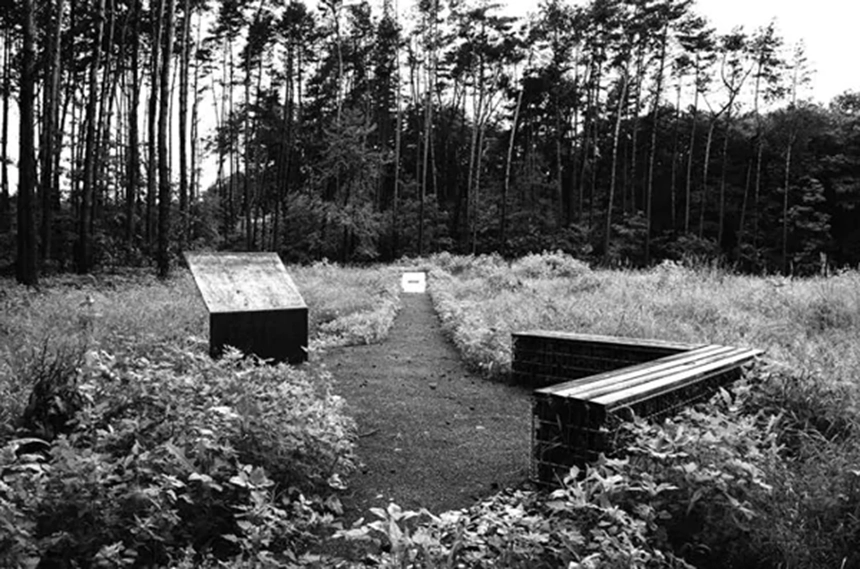
The first wave of violence directed at adult Jewish males and Soviet party activists took place in Volyn in the summer and fall of 1941. German soldiers were the first to be involved in the violence. Since the Germans did not remain there for long, the first mass shootings were carried out by Einsatzgruppe C, the Ordnungspolizei (Order Police, "Orpo"), and other German police units that were concentrated throughout western Volyn. In the summer and fall of 1941, they shot over 37,000 Jews. Later, local auxiliary police units were obliged to assist them, most often detaining victims and convoying them to killing sites. At times, they demonstrated initiative and participated in the killings. Between July and November 1941, the operations of German units evolved from murdering only adult males to shooting all Jews, including women, elderly people, and children. The first wave of shootings culminated in the killings that took place in the Sosonka tract (city of Rivne), where the largest number of Volynian Jews was killed in 1941: over 17,500 people.
Ghettos began to be set up in the Volyn region in October 1941, and the mass killings died down. Ghettoization lasted until May 1942, and this process depended on Gebietskommissars, who decided when ghettos were to be set up in the territory subordinated to them.
The second wave of violence in western Volyn, which began in May 1942, claimed the largest number of Jewish lives: 160,000. Between May and October 1942, nearly all the ghettos in western Volyn were liquidated. Jews were permitted to live a bit longer in a few forced labor camps and the Volodymyr ghetto.
The perpetual need to clarify dates and facts is an intrinsic feature of historical research. Concerning the events during the Nazi occupation of 1941–1942, I managed to correct multiple dates and facts that were cited incorrectly in earlier studies and encyclopedic publications. During my research, I was able to pinpoint the probable date (3 September 1941) when the Melnytsia village ghetto was liquidated and determine that there was a ghetto in Holoby. Contrary to the majority of encyclopedic publications, Jewish residents of this small town were never moved to the Melnytsia ghetto but were sent to Melnytsia once the process of liquidating that ghetto was underway. I was also able to establish the probable date (24 November 1942) of the mass shootings in the Zabiria tract near Holoby, the approximate date (the first half of September 1942) when the Kysylyn ghetto was liquidated, and the approximate date (March–April 1942) when Jews from surrounding villages were transported to the Ostrozhets ghetto. A thorough analysis of oral historical evidence helped establish the chronology of these events. The previously cited dates were often determined on the basis of documents produced by the Extraordinary State Commission for the Establishment and Investigation of the Atrocities of the German Fascist Invaders and Their Accomplices. Immediately after the liberation of territories, this commission began tallying the damages wrought by the Nazi occupation. However, its findings were hasty and not based on thorough research in many cases (owing to the lack of time and specialist commission members and the arduous nature of working during the ongoing war).
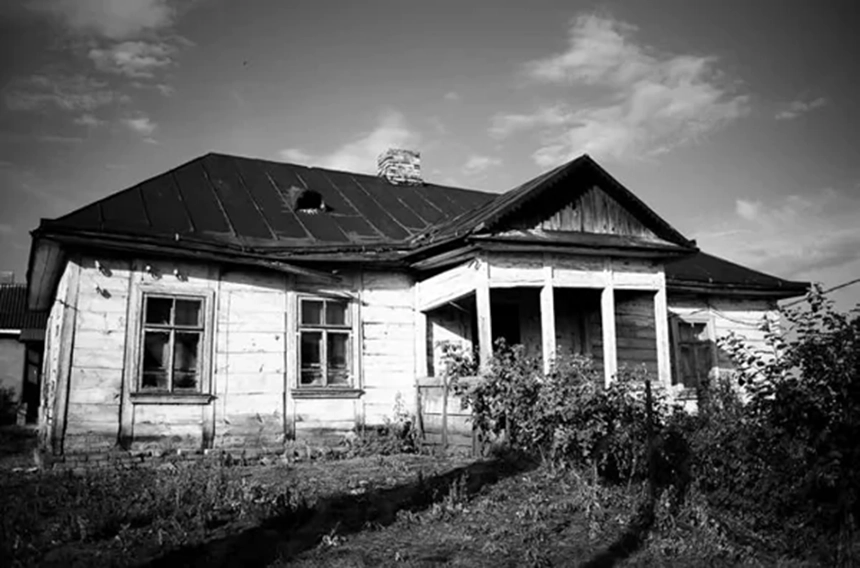
Where the date of the liquidation of the Ratne ghetto is concerned, there were discrepancies between Jewish testimonies (26 August or late August 1942) and those given by auxiliary police officers (mid-July 1942). I was able to confirm the precise date — 26 August 1942 — by comparing it with the dates when other ghettos in Kovel District were liquidated (the second half of August–first half of September 1942). [19] It should be noted that the series of publications discussed in the present article once again confirms the hypothesis that decisions concerning specific dates for the creation and liquidation of ghettos were made systematically at the district level during the Nazi occupation. It often happened that all the ghettos in every district were liquidated over two or three weeks. Clearly, the dates of these liquidations were chosen following talks between Gebietskommissars and German police units that played a key role in the liquidation operations. Thus, the liquidations of all the ghettos within a single district (Gebiet) were in sequential proximity. During my research, I was able to tally the number of ghettos — 75 — that the Nazi occupation authorities established on the territory of western Volyn. [20] In addition, 26 forced labor camps were created in western Volyn (Martin Dean discusses 25 of them in his article, cited below; however, after analyzing the sources, I discovered the existence of another forced labor camp located near the small town of Holoby). [21]
The property of murdered Jews
Looking at the second wave of anti-Jewish violence, which lasted from May through October 1942, one can trace the mechanism behind the confiscation of Jewish property. Studying the Holocaust in Holoby and Melnytsia, Kysylyn, Kovel, Mizoch, and Ratne allows us to expose the mechanisms behind the appropriation and redistribution of property owned by Jews killed in the Holocaust. The most valuable belongings were usually confiscated by the German authorities and looted by killing squads and auxiliary police on site.
Second on the list were officials of local civilian governments (municipal and raion administrations). Then came gravediggers, who were sometimes permitted to take something in compensation for having been forced to dig mass graves and bury the bodies. Sometimes, they simply helped themselves. They had ample opportunity to do so, given that they were close to heaps of confiscated Jewish belongings at killing sites.
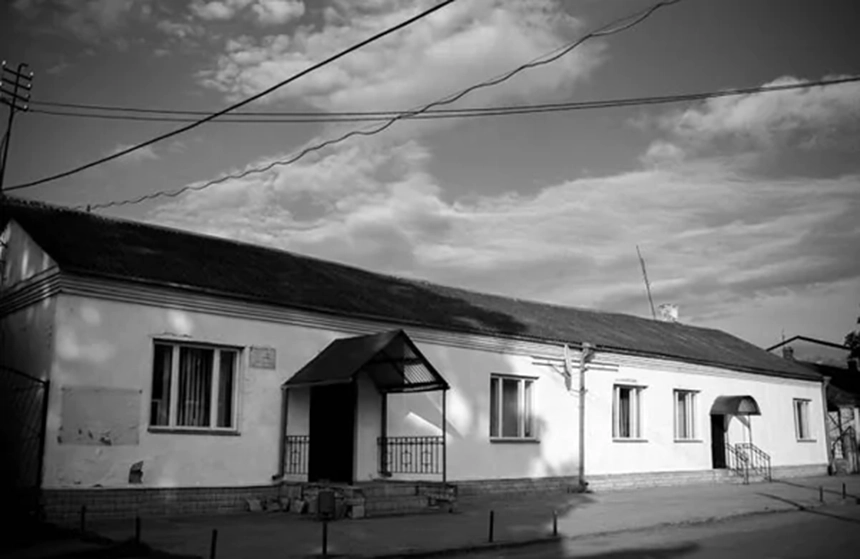
Ordinary peasants sometimes took part in plundering. They broke into houses situated inside ghettos immediately after they were liquidated. In some places, robbery was quite widespread. For example, after the Mizoch ghetto was liquidated, peasants from the surrounding villages arrived on wagons and carted off whatever they deemed valuable. [22] It is telling that even the Nazi occupation authorities' threats and harsh punishments for unsanctioned robberies did not always hinder this social practice of helping oneself to someone else's belongings. This brings us to an interesting research question that would require more in-depth study: Whereas most peasants, given the threat of punishment, were afraid to assist surviving Jews, their fears sometimes disappeared when it came to robbing their property. There were cases where auxiliary police forces and German gendarmes ignored peasant looting or refrained from handing down harsh punishments for this, which created an atmosphere of permissiveness. However, court cases and even severe punishments, including the death penalty, were common. This question requires further study because it may reveal how greed overcame the fear of harsh punishment. It would appear that action based on moral law, which Immanuel Kant wrote about, was intrinsic to some individuals who helped rescue Jews. In contrast, the inability to withstand the desire for profit, even under the pain of death, was characteristic of many individuals. [23] Still, most people constantly sought compromises and a balancing act between moral imperatives, the desire for profit, or the realization of other desires and external stimuli, such as fear of punishment. The Holocaust thus offers many examples of people's decisions, cobbled together from contradictions and inconsistencies that are observable during the space-time of the genocide.
The Nazi occupation authorities gave orders to confiscate and register all property that was not looted immediately after the mass killings. This task fell to municipal and raion administrations, which registered and delivered the belongings of murdered Jews to warehouses and later held "auctions" to sell used clothing and furniture to the local population and various organizations. For example, a special employee of the Land Management Department in the Kovel municipal administration was responsible for this. [24]
Another mechanism was developed for real estate belonging to murdered Jews. On 11 June 1942, i.e., at the beginning of the second wave of anti-Jewish violence, district commissars received instructions from the Reichskommissar about how to deal with real estate [25]: It had to be sold by the end of June 1942. Also included in the directives were damaged Jewish properties that were sold on a massive scale after the first operations to liquidate ghettos in western Volyn. The state nationalized other buildings that were later, most often in late 1942, sold to local residents. All that a prospective buyer had to do was write a declaration to the Gebietskommissar to obtain permission to purchase at a fixed price. Under the Nazi occupation, there was no free price-setting system for goods and services based on market mechanisms. The occupation authorities strictly regulated all prices and penalized violators with sanctions and the closure of their businesses. [26]
Peasants most often purchased Jewish homes not to inhabit them but to use them as building materials. In many small, populated areas, like Ostrozhets, Kysylyn, and Melnytsia, a Jewish small town consisted of small rowhouses. Neighbors shared a wall and often constructed doors through which they entered to visit each other. This type of "urban" development, which did not feature adjacent territory, orchards, and gardens, was of little interest to peasants. Reluctant to inhabit these houses, they chose to dismantle them for building materials or rebuild them to their taste on the same foundations, thus destroying the physical space of what had been a "small town" with its own distinctive look. These small towns, which were destroyed both physically and symbolically (owing to the disappearance of their Jewish residents, whose lifestyles combined both urban and rural features and whose urban-type economic activities consisted of trade and handicrafts), became villages. Other local peasants acquired houses that were in the best shape. Some still stand in Ostrozhets, Melnytsia, Kovel, and many other small towns in western Volyn.
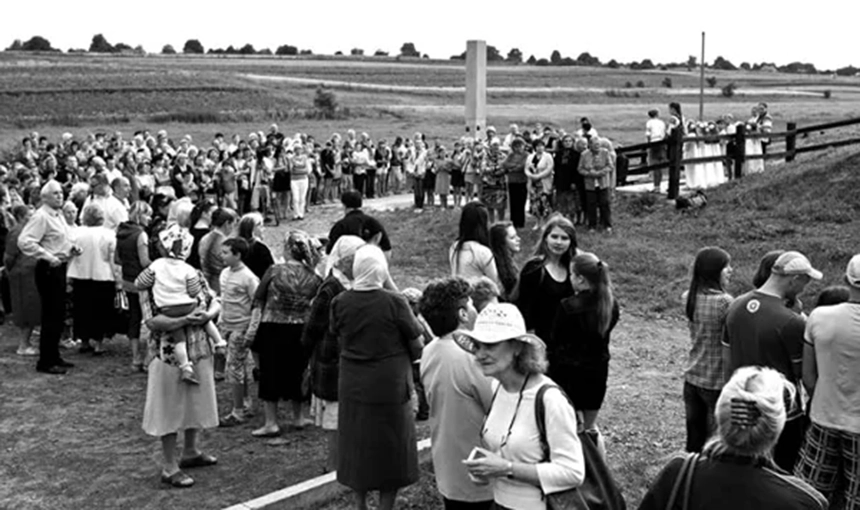
Survivors
Some Jews who managed to survive the second wave of violence had to develop various survival strategies, such as constant movement through forests and villages (usually in the first days after mass shootings); creating groups of survivors and outfitting dugouts or other hideouts in forests; searching for peasant acquaintances and concealing themselves in hideouts set up by their hosts; and joining partisan detachments or forming their own small partisan groups.
All these strategies were extremely risky. Most of the Jews who survived the two waves of Nazi violence in Volyn were eventually killed because the German gendarmerie, together with the auxiliary police, constantly combed through forests and organized roundups. The Nazi occupation authorities instituted capital punishment for anyone assisting Jews. However, even though the death penalty was not applied in all cases, families or individuals who hid Jews were shot periodically. This was done to spread rumors and create an atmosphere of fear. Nevertheless, some courageous men and women sheltered Jews for prolonged periods. They belonged to the largest ethnic groups populating the region: Ukrainians, Poles, Czechs, Germans (Volksdeutsche), and others.
However, this type of behavior was rare. Historians studying the question of how the local population really felt about Jews often lack understanding of sources from the perspective of this population. At the same time, Jewish testimonies paint a gloomy picture of indiscriminate antisemitism, denunciations, and betrayal. However, even here, everything often depends on what a given researcher chooses to see in these testimonies. By comparing all instances of betrayal and threats with some cases where local residents helped Jews (like pointing out the right way to a safe place, food offered in response to a request, and shelter given for one night or more), a researcher will arrive at less disheartening conclusions about the social dynamics of the genocide. Of course, if one searches for examples of long-term assistance, they are a rarity.
The survival rate of Jews on the territory of Nazi-occupied western Volyn fluctuated between one and five percent. However, there should be no rush to indict the elevated level of antisemitism among the local population or its treacherous behavior. The example of Kysylyn is telling here. The peasants in that town had close and trusted relations with Jews because of its small size and good social communications among the Ukrainian, Polish, and Jewish communities. However, the presence of a German gendarme post and an auxiliary police detachment in this town proved to be an insurmountable institutional factor that lessened the possibility of any kind of help that the peasants could offer. As Serhii Romaniuk, a Ukrainian resident of Kysylyn, said, "We were terrified, well, [there were] 25 police officers somewhere in the village…. And people were afraid that someone might denounce [them]. And there were people who were hiding somewhere, that's what I read in the newspapers. But no one in our vilІage hid anyone." [27]
In other populated areas, one insurmountable factor was the lack of trust owing to the presence of people who were greedy for profit and ready to betray Jews out of jealousy or the simple desire to obtain some sugar, salt, and whisky (one or the other or all three). It is possible that peasants who were greedy for profit and had a very materialistic worldview simply did not believe that people could help Jews selflessly. The antisemitic stereotype of the Gentile peasant who believed that prosperous Jews had hidden their treasures and were now relying on them to survive played an important role here. Peasants often viewed Jewish economic activities, which purportedly generated immense revenues, as "unproductive."
It is interesting to note the supraethnic character of cases where hiding places were betrayed. Among those who reported hiding places to the authorities were Ukrainians, Poles, Czechs, and German Volksdeutsche.
However, it would appear that antisemitism was not always a decisive factor. The same consequences do not always follow from the same causes. Consequences may have many causes, and when a "complete induction" [28] is impossible, we cannot understand them with certainty. Scholars who use the inductive research approach — in history, for example — often have to operate in conditions of incomplete knowledge. It is extremely difficult to determine which causes are definitive in one case or another. The fact that antisemitic stereotypes were deeply ingrained in the Christian population does not mean that they could lead to murder in certain extreme situations. For example, some people who helped Jews also bought into antisemitic stereotypes because they were from that social milieu.
Moreover, even modern "isms" that nurtured antisemitism did not always have the effect that we may suppose. A case in point: When Trokhym Huts and Fedir Korotiuk, two captured OUN(B) underground members based in Mizoch and Tuchyn, were interrogated, both of them declared their nationalistic views as the reason behind their joining the ranks of the OUN(B). They did not attempt to justify themselves by citing forced mobilization (as many arrested UPA fighters and OUN underground members did). [29] Both men rescued Jews, and Korotiuk is one of the most recent Ukrainians to receive the title of Righteous Among the Nations from Yad Vashem.
That Ukrainian integral nationalism was marked by a considerable amount of antisemitism is a proven fact. [30] However, does this mean that people who fought for Ukraine on the side of organizations committed to integral nationalism necessarily espoused antisemitism? Clearly, far from everyone did and far from always. On the other hand, nowhere near every nationalist underground member truly espoused nationalistic ideas (they were not part of the ideological core of the movement's followers). Life is much more complicated and varied, and people's personal choices are not always understandable to themselves, let alone to others, especially researchers.
Another question requiring further study is the institutional role that the OUN and the UPA played in the Holocaust in Ukraine. In one of his recent publications, the Canadian historian John-Paul Himka discusses the significant role that the UPA played in 1943–1944. He cites a substantial number of cases pointing to the involvement of various UPA units in searching for and killing Jews hiding in forests or the homes of local peasants. I was able to investigate a case that Himka mentions in passing, which reveals the UPA's attitude toward Jewish survivors in the forests of Mizoch raion. Himka suggests that there was a "labor camp" near Mizoch that the UPA set up for Jews, who performed labor in exchange for shelter and food. According to him, when the Red Army was advancing in 1944, the UPA fighters may have killed the majority of these Jewish laborers, considering them inconvenient witnesses who, from the fighters' perspective, could not be trusted even earlier. [31]
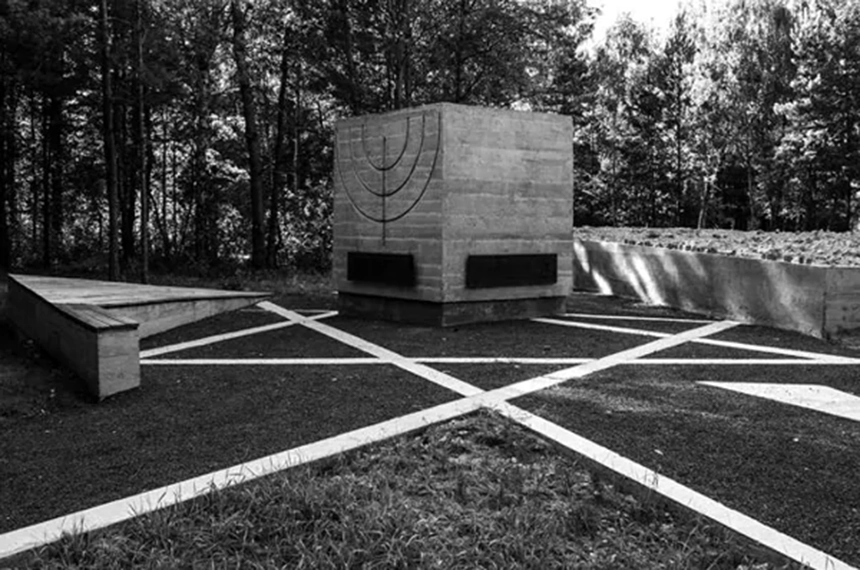
When Roman Mykhalchuk and I researched this case, we arrived at markedly contradictory and complicated findings. [32] The lands of Mizoch raion were indeed under the considerable influence of UPA fighters. However, in 1943–1944, the attitude of UPA units toward Jews varied. Concerning the first half of 1943, Jewish testimonies contain a considerable number of references to attacks by UPA fighters on groups of surviving Jews that had formed in forests, as well as mentions of numerous killings of mostly adult males, who may have been perceived as a threat or mistaken for members of Soviet partisan groupings. Of course, the possibility that these attacks were inspired by ideological antisemitism should not be discounted.
In the second half of 1943, a dramatic change may be noted in the treatment of Jewish survivors by UPA fighters in this area. The UPA's negotiations with Blanik, the Czech underground resistance operating in the village of Borshchivka, played a significant role in this shift. The Czech community in this village aided Jews. After the UPA fighters concluded an unofficial understanding about cooperation and non-aggression, they agreed not to kill Jews whom they might accidentally discover in neighboring forests and, instead, send them to Borshchivka. There are testimonies from Jews who survived because UPA fighters sent them to that village. However, this state of affairs was short-lived. As the Red Army advanced, a negative trend was observed once again in the UPA's attitude toward Jewish survivors. Therefore, this question requires a more thorough investigation. Even though some UPA units were involved in killing Jews, microhistory studies prove that the UPA's position was significantly more ambivalent and problematic than previously thought. Its stance may not have been centralized and fully crystallized. Everything often depended on the position of a given commander, groups of fighters, the balance of power, and the various understandings that were concluded in one locale or another (as in the case of Borshchivka, where the UPA's situational cooperation with Blanik led to the rescue of at least a few Jewish lives).
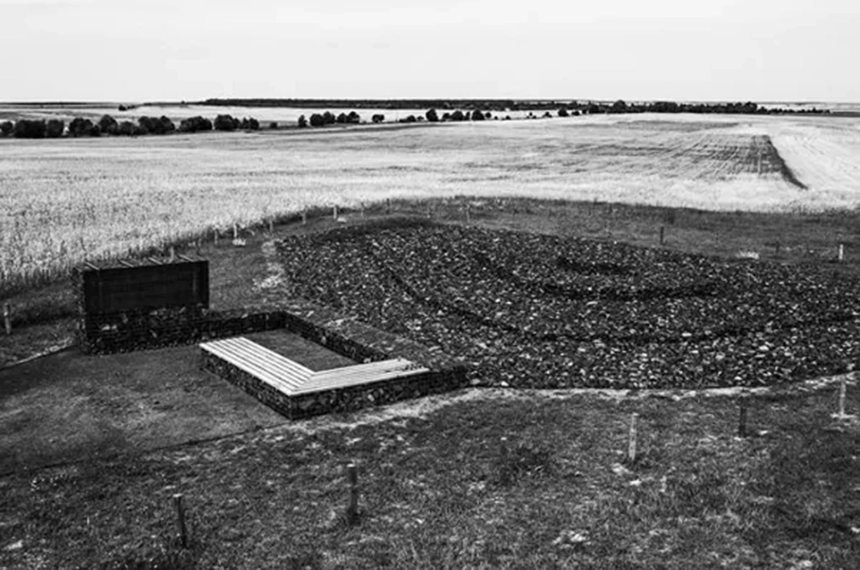
The attitude of the Soviet partisan movement and the Polish resistance toward Jewish survivors is a thorny question. Publications about the Holocaust in Kovel mention that Jews were afraid of the Polish underground. As for the Soviet partisans, six publications devoted to the history of the Holocaust in western Volynian towns discuss the complicated relations between them and Jews. Even though a considerable number of Jews survived the Holocaust in the ranks of Soviet partisans, many survivors recall that these Soviet fighters killed Jews and that there was an elevated level of antisemitism in their ranks. The role of antisemitism in the attitude toward Jews is also a thorny question. Here, too, much depended on the positions of commanders of detachments and rank-and-file fighters. In general, encounters with Soviet partisan detachments on the territory of western Volyn were threatening to the Jewish population.
In 1943–1944, a wave of mutual Ukrainian-Polish ethnic cleansing initiated by the UPA (which caused the Polish population more suffering), as well as clashes between the UPA, the Armia Krajowa, and Soviet partisans, took place in western Volyn. These clashes and cleansing operations further deepened the catastrophic plight of Jewish survivors because, in addition to Nazi violence, the interethnic and ideological confrontations between various military forces magnified the violence and diminished the chances of survival.
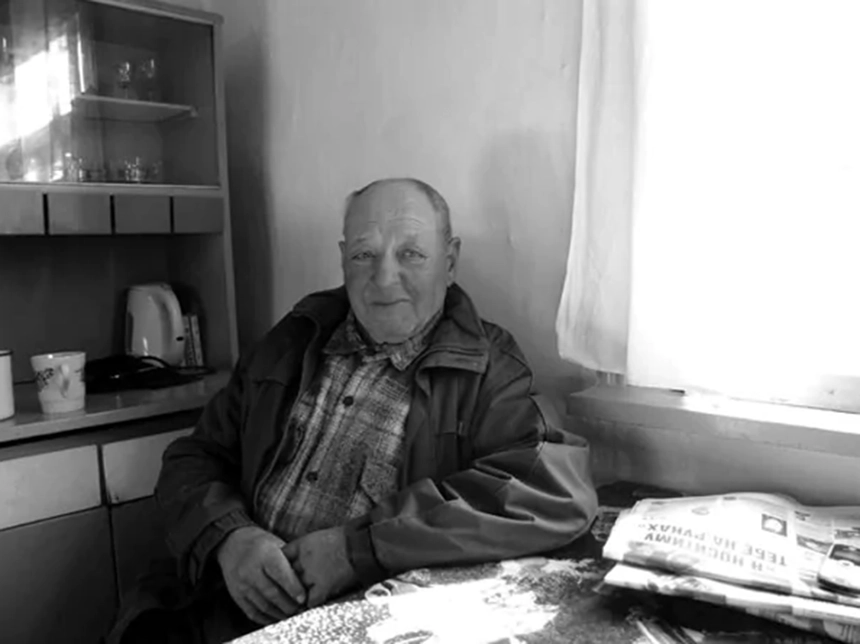
Returning survivors
According to Shmuel Spector, after the Red Army occupied western Volyn for the second time, there were only 2,836 Jewish survivors, [33] 1.5 percent of the prewar Jewish population of western Volyn. The majority of survivors had no place to which they could return. Their homes were either destroyed, looted and on the verge of collapsing, or occupied by local residents or Soviet functionaries new to the area. In addition, almost all Jewish communities were decimated. Lone survivors returned to the places where their homes once stood, only to find an utter wasteland.
The predominant majority of survivors chose to emigrate, the most popular destinations being Palestine, USA, Canada, France, Belgium, Argentina, and Brazil. Among the most frequently cited reasons for leaving Volyn were traumatic memories; the unwillingness to continue living in a repressive state (USSR); the loss of their homes and all their relatives; fear stemming from the postwar disorder; and the activities of partisan groups. Partisan movements, including the UPA, continued to operate in western Volyn. Some Jewish survivors recall that they feared them; others recalled the deaths of Jewish survivors at the hands of unidentified groupings or local residents.
Jewish survivors who chose to stay moved to larger cities, which offered more safety and better opportunities to survive the postwar disorder. After the Holocaust in western Volyn, the entire social space known as the "shtetl" vanished. Even though small Jewish communities continued to exist, their numbers were too insignificant to form the cultural face of the country's populated areas.
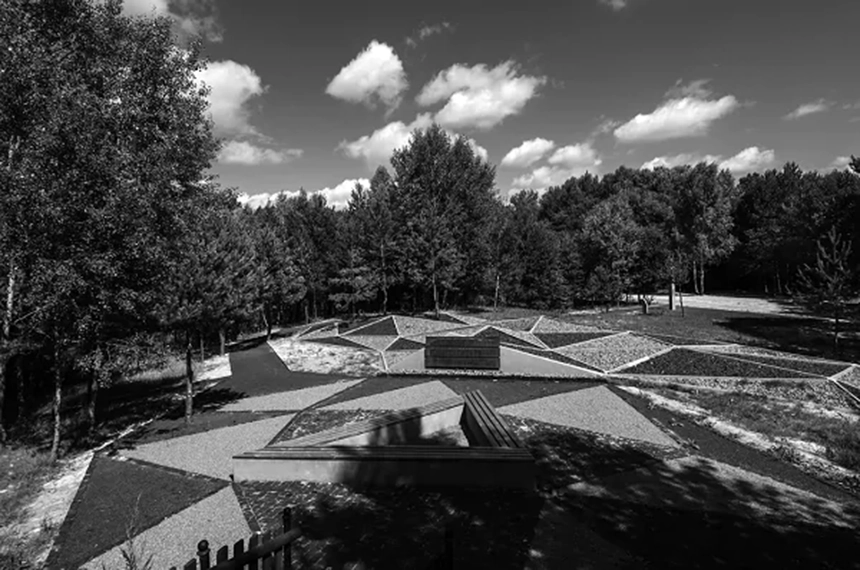
Commemoration: still "erased"?
Omer Bartov, a distinguished historian of the Holocaust, once went on an expedition to various memorial sites connected with Jewish history and the Holocaust in eastern Galicia. His journey resulted in the book Erased: Vanishing Traces of Jewish Galicia in Present-Day Ukraine (2008), [34] in which he argues that all the traces of Jews in eastern Galicia have been practically erased. Most historical and cultural monuments are in a neglected state, and mass killing sites have not been duly identified.
While working on the Connecting Memory project in 2023, I went on several expeditions to various small towns in western Volyn. My trips to Ostrozhets, Holoby, and Melnytsia were the most productive ones. The trips produced mixed results. For example, there are many monuments of the Jewish historical and cultural heritage in the village of Melnytsia, which was officially considered a small town before the Holocaust. Elderly farmers remember the village's Jewish history well. Also preserved there are the foundations of several Jewish houses — new houses owned by Ukrainian residents have been built on them. Only one house, once owned by a Jewish family named Roh, has been preserved in its original form. However, it is on the verge of collapsing and will probably be demolished soon.
Today, only one of Melnytsia's three Jewish cemeteries is fenced off and has a commemorative marker with an inscription explaining what this place is. [35] The marker memorializing Jews who were killed in Melnytsia was installed in 1990, and its inscription thus features the formulaic Soviet explanation: "In this place in 1942, the fascists destroyed 1,200 Soviet citizens." In the neighboring village of Holoby, a local initiative group of educators had a contemporary memorial marker installed in 2023, part of the German-Ukrainian Connecting Memory project. This small monument consists of a plaque with information about the Holocaust in Holoby. Ceremonies in honor of the massacred Jewish community take place near this commemorative marker on an annual basis. Through the efforts of local activists, the local secondary school now has an exhibit on the history of Holoby, including Holocaust events.
Ceremonies to commemorate Holocaust victims also take place in Ostrozhets, another small town in western Volyn that became a village after the Holocaust. The commemorative marker was funded by Germany's Federal Ministry of Foreign Affairs and officially unveiled on 2 July 2015 within the framework of the Protecting Memory project. Since then, annual commemorative ceremonies have taken place near this memorial. They are organized by local government representatives and the Ostrozhets Lyceum. The lyceum's museum exhibition is being revamped with the narrative now presenting the history of the former town's Ukrainian, Jewish, and Polish communities, along with a brief exposition of the history of the Holocaust. Several formerly Jewish-owned houses have been preserved in Ostrozhets and have new owners. Their back story is not indicated. The old Jewish cemetery in Ostrozhets was destroyed during the Soviet era.
On the one hand, the memory of the Jewish past is far from optimal, but on the other, much work has been done in these three populated areas. Commemorative markers have been installed there, and active memorial practices take place regularly; school museums have been created, and the local history of the Holocaust is being taught in those schools. Similar initiatives exist in other populated areas in the region. Thus, it is difficult to agree with the statement that Jewish traces have been entirely erased. They are gradually being restored in keeping with current memorial practices and education.
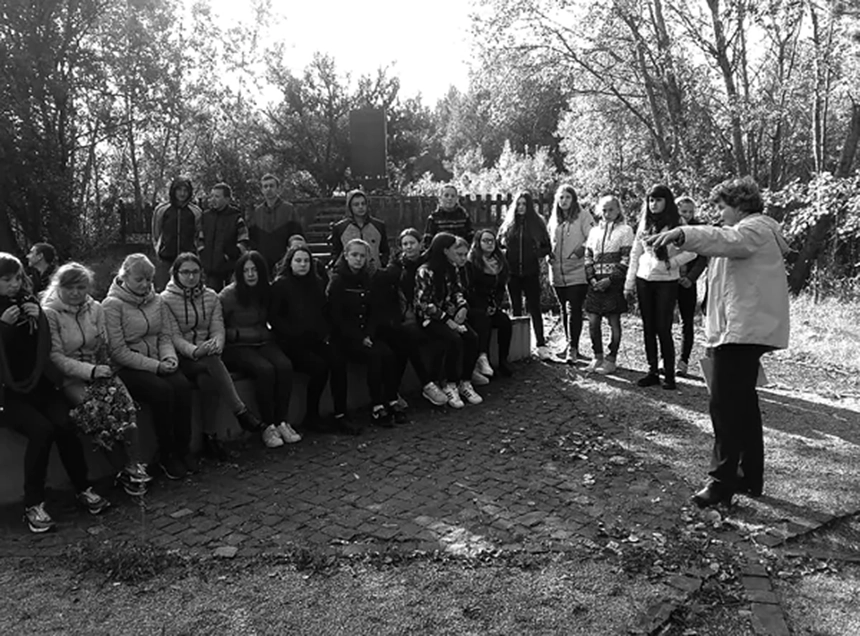
In Mizoch, an information plaque displaying a short historical resume about the local Holocaust events has been installed next to a commemorative marker that was placed earlier. It, too, is the result of the partnership between local activists and the Connecting Memory project. As part of the Protecting Memory (2010–2019) and Connecting Memory (2020–2023) projects, memorials at sites where Jews were killed have been unveiled in other towns and villages of western Volyn: Ostrozhets, Kovel (in the village of Bakhiv, where the largest number of Kovel Jews were killed), Kysylyn, and Ratne (in the village of Prokhid, where most of Ratne Jews were killed). Every year, ceremonies in honor of Holocaust victims are held at most of these memorial sites. Local authorities and students with their schoolteachers look after these places of memory. Both projects have operated in other Ukrainian oblasts in the past thirteen years. In areas with local activists ready to support memorialization, projects have been carried out in close collaboration with local partners (especially in Zhytomyr, Vinnytsia, and Lviv oblasts), [36] fostering networking and strengthening local initiatives.
Since Bartov's expedition, the situation in various regions of Ukraine has changed for the better. The memory of the Jews has not been completely erased, and Holocaust studies are developing, albeit slowly. They are being increasingly integrated into academic studies, and commemorative trends are increasingly aligning with EU practices. [37] Nevertheless, much work remains to be done.
The photographs used in this article are from open sources and the archive of the Connecting Memory project.
Endnotes
1 The author owes a debt of gratitude to the Ukrainian historian Andriy Usach and the German historian Svetlana Burmistr for their editorial assistance and valuable advice, which helped to improve this text.
2 Petro Dolhanov, Ratne: Zhyttia і zahybel′ ievreis′koї hromady (Kyiv: Ukraïns′kyi tsentr vyvchennia istoriï Holokostu, 2023), p. 13.
3 Petro Dolhanov, Kovel′: Zhyttia і zahybel′ ievreis′koї hromady (Kyiv: Ukraïns′kyi tsentr vyvchennia istoriï Holokostu, 2023), p. 14.
4 Dolhanov, Ratne, p. 13.
5 For detailed discussion, see Petro Dolhanov, "'Inshyi/Chuzhyi': Obraz ievreїv u spohadakh ukraїns′kykh susidiv pro Druhu svitovu viinu," Problemy istoriї Holokostu: Ukraїns′kyi vymir 14 (December 2022): 41–57.
6 Petro Dolhanov, Ostrozhets′: Zhyttia ta zahybel′ ievreis′koï hromady (Kyiv: Ukraïns′kyi tsentr vyvchennia istoriï Holokostu, 2023), p. 20; idem, Kysylyn: Zhyttia ta zahybel′ ievreis′koï hromady (Kyiv: Ukraïns′kyi tsentr vyvchennia istoriï Holokostu, 2023), p. 14.
7 Petro Dolhanov, Holoby i Mel′nytsia: Zhyttia ta zahybel′ ievreis′koï hromady (Kyiv: Ukraïns′kyi tsentr vyvchennia istoriï Holokostu, 2023), p. 19.
8 Dolhanov, Kovel′, pp. 12–13.
9 In studying the interaction between Jewish communities and the Gentile population, I focused above all on Christian communities because there were few other religious communities in western Volyn during the interwar period, and they did not constitute a significant majority. Nonetheless, the relationship between Jews and Gentiles who practiced a non-Christian faith (Islam, for example) is an interesting topic for further research.
10 Dolhanov, Ostrozhets′, p. 25.
11 For a detailed study of anti-Jewish violence in Eastern Galicia, see Kai Struve, Nimets′ka vlada, ukraїns′kyi natsionalizm, nasyl′stvo proty ievreїv: Lito 1941 roku v Zakhidnii Ukraїni (Kyiv: DUKH І LITERA, 2022).
12 Dolhanov, Ratne, pp. 20–23.
13 Roman Mykhal′chuk, Mizoch: Zhyttia ta zahybel′ ievreis′koï hromady (Kyiv: Ukraïns′kyi tsentr vyvchennia istoriï Holokostu, 2023), pp. 20–23.
14 Ibid., pp. 24–28.
15 SBU archives (AU SBU) in Rivne oblast, spr. 2134 (Andrushchuk, Petro Semenovych), fol. 19v.
16 Jared McBride, "The Tuchyn Pogrom: The Names and Faces behind the Violence (Summer 1941), Holocaust and Genocide Studies 36, no. 3 (2022): 315–33.
17 There is information about the presence of two members of an expeditionary group, one with the codename "Stalevyi," in the town.
18 Mykhal′chuk, Mizoch, p. 20.
19 Dolhanov, Ratne, pp. 33–34.
20 The calculation is based on the materials of The United States Holocaust Memorial Museum Encyclopedia of Camps and Ghettos, 1933–1945, vol. 2, pt. B.
21 Martin Dean, "Forced Labor Camps for Jews in Reichskommissariat Ukraine: The Exploitation of Jewish Labor within the Holocaust in the East," Eastern European Holocaust Studies, https://www.degruyter.com/document/doi/10.1515/eehs-2022-0002/html; Dolhanov, Ratne, pp. 31, 37.
22 For details of the looting of the Mizoch ghetto, see Roman Mykhal′chuk and Petro Dolhanov, "'Ievreiu, my tebe zdamo, nam potriben tvii odiah': Pohrabuvannia ievreїv Mizocha pid chas Holokostu," Holokost v Ukraїni: Iakh (ne)pyshut′ istoriiu zlochynu, no. 34 (2023): 173–76.
23 Imanuil Kant [Immanuel Kant], Kritika prakticheskogo razuma (Almaty: RDTs-Almaty, 2019), pp. 42–43. Kant offers the example of an individual who believes that their desire for pleasure will take over every time an opportunity presents itself. At the same time, Kant suggests that a person can fully rein in this "unrestrained" desire when faced with the threat of inevitable punishment by death. That same individual, if asked to testify against an absolutely honest person under the threat of inevitable punishment by death, will think about it and not be able to answer exactly how they would act — guided by the threat or the moral law not to harm an innocent person.
24 Dolhanov, Kovel′, p. 36.
25 Petro Dolhanov, "Benefitsiary Holokostu: Rol′ 'susidiv' u pohrabuvanni ievreїv Volyni v period natsysts′koї okupatsiї," Misto: Istoriia, kul′tura, suspil′stvo, special issue, Holokost і misto: Prostory vbyvstva — prostory ruinatsiї, no. 9 (2020): 68.
26 See, e.g., the State Archives of Rivne Oblast (DARO), f. R-37, op. 3, spr. 1, fols. 1–2, 11.
27 Dolhanov, Kysylyn, p. 43.
28 This is inductive research, a method that a priori can never offer any complete knowledge of reality.
29 Archive of the SBU Directorate (AU SBU) in Rivne oblast, spr. 954 (Korotiuk, Fedir Tryfonovych), fol. 14v; AU SBU in Rivne oblast, spr. 2921 (Huts, Trokhym Iakovych), fol. 36.
30 For detailed discussion, see Oleksandr Zaitsev, Ukraїns′kyi intehral′nyi natsionalizm (1920–1930-ti roky); Narysy intelektual′noї istoriї (Kyiv: Krytyka, 2013; idem, Natsionalist u dobi fashyzmu: L′vivs′kyi period Dmytra Dontsova, 1922–1939; Nacherk intelektual′noї biohrafiї (Kyiv, Krytyka, 2019); John-Paul Himka, Ukrainian Nationalists and the Holocaust: OUN and UPA’s Participation in the Destruction of Ukrainian Jewry, 1941–1944 (Stuttgart: Ibidem-Verlag, 2021).
31 Himka, Ukrainian Nationalists, p. 408.
32 Mykhal′chuk, Mizoch, pp. 48–53.
33 Shmuel Spector, The Holocaust of Volhynian Jews, 1941–1944 (Jerusalem: Yad Vashem, Federation of Volhynian Jews, 1990), p. 358.
34 Omer Bartov, Erased: Vanishing Traces of Jewish Galicia in Present-Day Ukraine (New Jersey: Princeton University Press, 2007).
35 One of the Jewish cemeteries in Melnytsia was destroyed during the Soviet period. Little is known about the fate of the third one.
36 For the complete list of places where commemorative markers were installed, visit the websites of the Protecting Memory and Connecting Memory projects.
37 This author was involved in the installation of "stumbling stones" commemorating the victims of Nazism in the city of Rivne. This European practice of memorializing victims of the Holocaust is gradually appearing in Ukraine.
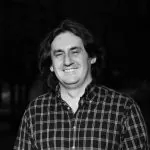 Petro Dolhanov is a Candidate of Historical Sciences, Assistant Professor of Pedagogy and Educational Innovations at the Rivne Regional Institute of Postgraduate Pedagogical Education, editor of the column "Overcoming the Past" on the website of Ukraїna Moderna, member of the editorial board of Eastern European Holocaust Studies, and guest editor of a special issue of Ukraina Moderna entitled The Holocaust in Ukraine: How the History of the Crime Is (Not) Written. He is the author of the monograph Svii do svoho po svoie: Sotsial′no-ekonomichnyi vymir natsiietvorchykh stratehii ukraїntsiv u mizhvoiennii Pol′shchi (Our Own People to Our Own for Our Own: The Socioeconomic Dimension of Ukrainians' Nation-Building Strategies in Interwar Poland [Rivne, 2018]), and the co-author, with Maksym Gon and Nataliia Ivchyk, of the monograph Misto pam'iati — misto zabuttia: Palimpsesty memorial′noho landshaftu Rivnoho (Town of Memory — Town of Oblivion: Palimpsests of the Memorial Landscape of Rivne [Rivne, 2019]). He is the author of most of the volumes in the series The Life and Death of Jewish Communities. He is currently researching the topic, "Property Hunters: Economic Factors Underlying the Behavior of the Non-Jewish Population of Western Volyn during the Holocaust," supported in 2023 by a Sosland Foundation Fellowship from the Jack, Joseph and Morton Mandel Center for Advanced Holocaust Studies, United States Holocaust Memorial Museum. He organizes training sessions, summer schools, roundtables, and academic conferences on history and politics; coordinates educational projects and museum exhibitions memorializing and popularizing the history of the Holocaust; and is one of the initiators of the exhibition A Brief History of Violence: The Second World War and the Holocaust in Western Volyn (curated by the civic organization After Silence). During his work with the Mnemonics Center for Studies of Memory Policy and Public History, he was one of the initiators and coordinators of the installation of commemorative markers in the city of Rivne honoring the victims of Nazism (modeled on "stumbling stones") and of a marker honoring Rivne ghetto victims. His research interests include the history of the Holocaust, the theory and practice of nationalism, and the politics of memory.
Petro Dolhanov is a Candidate of Historical Sciences, Assistant Professor of Pedagogy and Educational Innovations at the Rivne Regional Institute of Postgraduate Pedagogical Education, editor of the column "Overcoming the Past" on the website of Ukraїna Moderna, member of the editorial board of Eastern European Holocaust Studies, and guest editor of a special issue of Ukraina Moderna entitled The Holocaust in Ukraine: How the History of the Crime Is (Not) Written. He is the author of the monograph Svii do svoho po svoie: Sotsial′no-ekonomichnyi vymir natsiietvorchykh stratehii ukraїntsiv u mizhvoiennii Pol′shchi (Our Own People to Our Own for Our Own: The Socioeconomic Dimension of Ukrainians' Nation-Building Strategies in Interwar Poland [Rivne, 2018]), and the co-author, with Maksym Gon and Nataliia Ivchyk, of the monograph Misto pam'iati — misto zabuttia: Palimpsesty memorial′noho landshaftu Rivnoho (Town of Memory — Town of Oblivion: Palimpsests of the Memorial Landscape of Rivne [Rivne, 2019]). He is the author of most of the volumes in the series The Life and Death of Jewish Communities. He is currently researching the topic, "Property Hunters: Economic Factors Underlying the Behavior of the Non-Jewish Population of Western Volyn during the Holocaust," supported in 2023 by a Sosland Foundation Fellowship from the Jack, Joseph and Morton Mandel Center for Advanced Holocaust Studies, United States Holocaust Memorial Museum. He organizes training sessions, summer schools, roundtables, and academic conferences on history and politics; coordinates educational projects and museum exhibitions memorializing and popularizing the history of the Holocaust; and is one of the initiators of the exhibition A Brief History of Violence: The Second World War and the Holocaust in Western Volyn (curated by the civic organization After Silence). During his work with the Mnemonics Center for Studies of Memory Policy and Public History, he was one of the initiators and coordinators of the installation of commemorative markers in the city of Rivne honoring the victims of Nazism (modeled on "stumbling stones") and of a marker honoring Rivne ghetto victims. His research interests include the history of the Holocaust, the theory and practice of nationalism, and the politics of memory.
Originally appeared in Ukrainian @Ukraina Moderna
This article was published as part of a project supported by the Canadian non-profit charitable organization Ukrainian Jewish Encounter.
Translated from the Ukrainian by Marta D. Olynyk.
NOTE: UJE does not necessarily endorse opinions expressed in articles and other materials published on its website and social media pages. Such materials are posted to promote discussion related to Ukrainian-Jewish interactions and relations. The website and social media pages will be places of information that reflect varied viewpoints.







